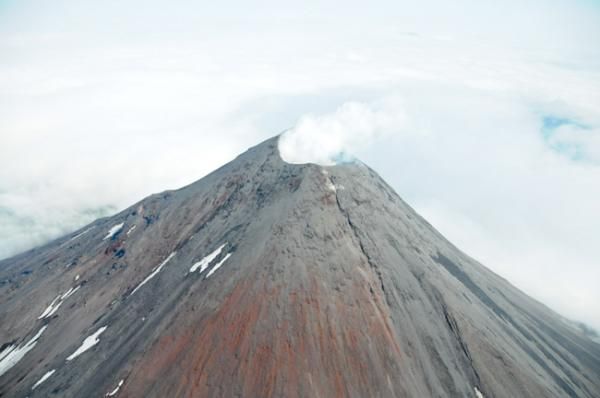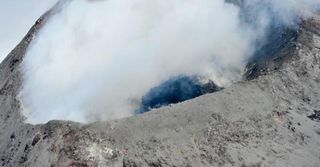
Alaska Volcano Eruption Spotted by Satellites

Alaska's Cleveland volcano is slowly erupting, but because of its remote location, scientists can't watch the action unfold live. Luckily, satellites up in space can lend them a hand, or an eye.
Cleveland volcano, a 5,676-foot-tall (1,730 meters) mountain on the uninhabited island of Chuginadak,typically acts up a few times each year. The current eruption isn't as showy as other recent eruptions, such as Italy's explosive Mount Etna . Right now the Cleveland volcano has "a little lava growing at the top," said Rick Wessels, a geophysicist with the Alaska Volcano Observatory. "It's pretty neat."
Watch the lava grow isn't easy, Wessels said. The volcano is just too remote for the monitoring techniques used elsewhere. There's no webcam or seismic monitors on Cleveland volcano, and a targeted helicopter flyby would be too expensive.
Instead, the scientists are relying on satellite images and thermal data to keep track of the lava dome, which has been growing since around July 7. A lava dome is a round mound of sticky lava that pokes out from the volcano's crater.Based on satellite images, the scientists estimate the dome was at about 197 feet (60 meters) across on Monday (Aug. 8), and slowly growing by a few meters a day, Wessels said. The dome is fully inside the crater.
"We'd be more concerned if it was growing faster and growing over the crater," Wessels told OurAmazingPlanet.

If the dome stretches beyond the crater, a piece could break off pose a threat to anyone below, Wessels said, but the remote area doesn't have many people living nearby. The main hazard is the possibility of a large explosion triggering an ash cloud that could disrupt air travel, Wessels said.
That could make the lava dome even harder to see for the few planes that pass by and take pictures.
Sign up for the Live Science daily newsletter now
Get the world’s most fascinating discoveries delivered straight to your inbox.
Cleveland volcano is part of the infamous Pacific Ring of Fire , a string of volcanoes strewn around the perimeter of the Pacific Ocean that produces some of the world's most dramatic and dangerous eruptions.
- In Images: Hawaii's Mount Kilauea Erupts
Email OurAmazingPlanet staff writer Brett Israel at bisrael@techmedianetwork.com. Follow him on Twitter @btisrael.











